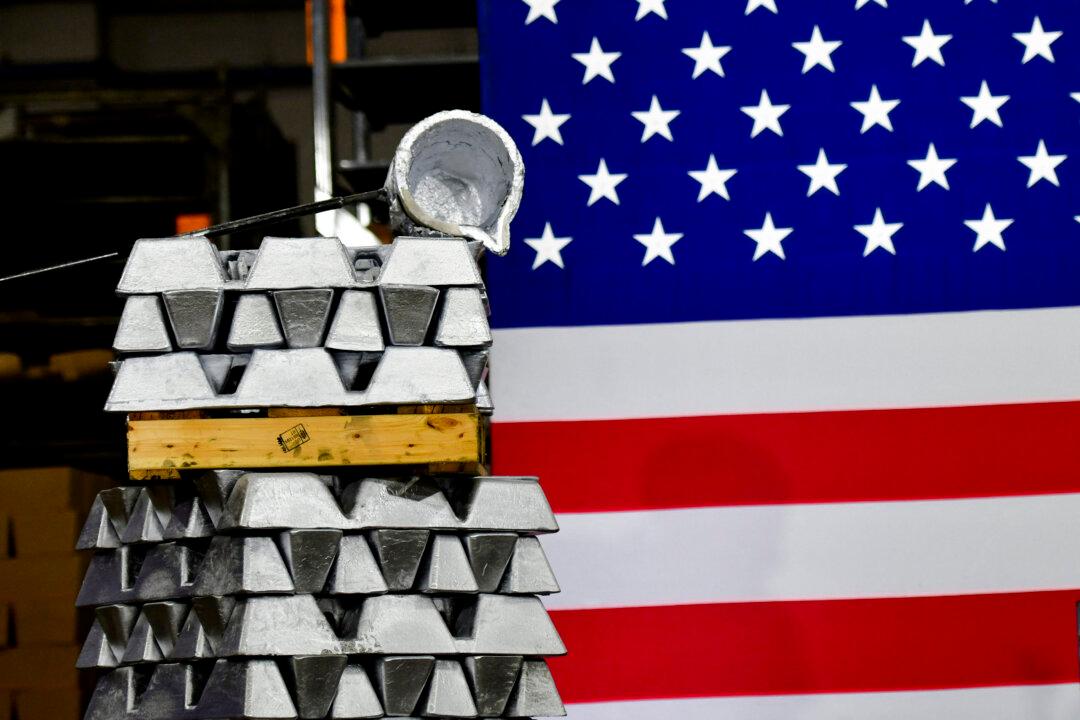The Fed report also showed that the manufacturing sector grew at a 5.1 percent annualized pace in the first quarter.
U.S. manufacturing continued to grow in March, albeit at a slower pace than the brisk expansion seen the month prior, according to new data from the Federal Reserve, which comes amid President Donald Trump’s tariff-led push to reindustrialize the American economy and rebuild the country’s long-declining industrial base.
Factory output increased by 0.3 percent last month after an upwardly revised 1 percent rebound in February, the Fed said in its April 16
report. On an annual basis, output at U.S. factories advanced by 1 percent from March last year.
While still in positive territory, the March reading suggests a deceleration in growth from February, when manufacturing activity
surged in what was Trump’s first full month back in office. That acceleration had fueled hopes of a broader industrial revival, bolstered by parallel indicators from the
Institute for Supply Management (ISM) and
S&P Global, both of which painted a picture of renewed momentum, with indicators pointing to rising orders, stronger output, and increased hiring across factory floors.
The Fed report also showed that the manufacturing sector—which accounts for roughly 10 percent of the U.S. economy—grew at a 5.1 percent annualized pace in the first quarter, rebounding sharply from a 1.5 percent contraction in the final three months of 2024.
Trump’s pledge to revive U.S. manufacturing played a pivotal role in his 2024 election campaign. Even before his inauguration in January, measures of business sentiment began to surge, reflecting expectations that his administration’s policies would prioritize domestic industry and create a more favorable environment for investment and production.
The president views tariffs as a tool to accomplish three key goals: using trade pressure to extract concessions from foreign governments, encouraging American companies to reshore production, and raising revenue to fund tax cuts for households and businesses.
Still, the tariff rollout has generated uncertainty. Confidence readings from both the
University of Michigan and
The Conference Board have trended lower in recent weeks, with survey respondents citing inflation concerns, tariff-related costs, and general anxiety about economic direction. Small business optimism
has also softened, as firms try to assess whether rising input costs and shifting trade relationships will hurt profitability.
Trump and members of his administration say the tariffs will deliver long-term benefits, though they have acknowledged the potential for near-term disruptions.
“I think this country’s going to boom,” Trump
told reporters outside the White House in mid-March. “But as I said, I can do it the easy way or the hard way. The hard way to do it is exactly what I’m doing, but the results are going to be 20 times greater.”
Some analysts say patience is warranted. In a recent research
note, ING economists pointed to short-term risks posed by Trump’s tariff actions but argued they could pay off over time.
“The announcement of a 10 [percent] minimum tariff that jumps to 25 [percent] for some products and then rises steeply to 145 [percent] for the majority of Chinese exports may, over time, reap benefits for the U.S. economy and American workers,“ the ING analysts wrote. ”In the near term, though, it means the U.S. economy faces a very challenging and likely economically damaging transition period.”
Even so, some signs of strain are already visible. Updated
ISM and
S&P Global reports for March painted a less optimistic picture than February’s data.
Other economic indicators offered more encouraging signals. In March, U.S. retail sales
jumped by 1.4 percent, employers
added 228,000 jobs—well above forecasts—while inflation
cooled to 2.4 percent, its lowest level in six months.







